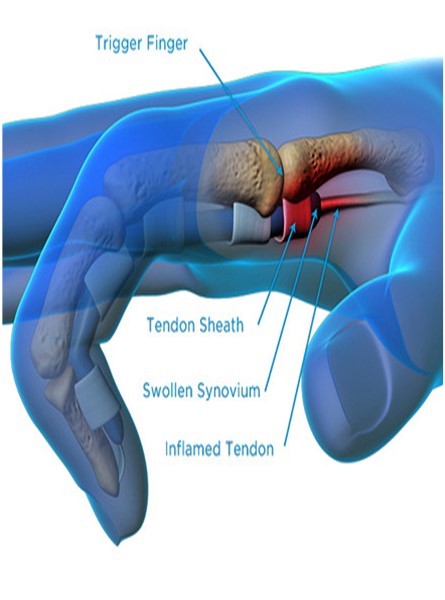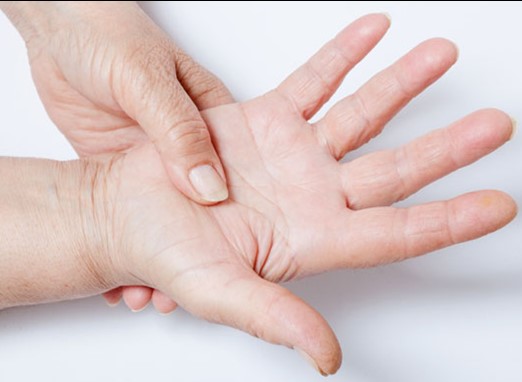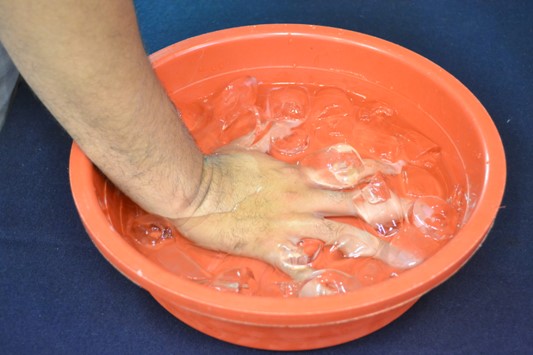What is trigger finger?
Trigger finger is a common finger aliment, thought to be caused by inflammation and subsequent narrowing of the retinacular sheath, which causes pain, clicking, catching, and loss of motion of the affected finger. Although it can occur in anyone, it is seen more frequently in the diabetic population and in women, typically in the fifth to the sixth decade of life.
|
source :www.maurerlaw.net/ |
Causes of a trigger finger
Several causes of trigger finger such as repetitive finger movements and local trauma are possibilities. Stress and degenerative force also account for an increased incidence of trigger finger in the dominant hand.
Symptoms of trigger finger may include :
- Pain and tenderness at the base of the affected finger or thumb
- Catching or locking of the digit in a bent position
- Popping or clicking when the finger is straightened.
- A nodule (a small growth or lump of tissue) at the base of the affected finger or thumb
- Stiffness of the affected finger or thumb, particularly happens first thing in the morning. Over time it may be difficult to straighten the finger or thumb and it may stay in a bent position.
Diagnosis
The classic presentation of popping and locking of a trigger finger is typically all that is needed for diagnosis. Diagnosis of trigger finger can be confirmed by a physiotherapist or doctor, who will assess your finger and hand thoroughly.
How can physiotherapy help?
Physiotherapy treatment will help to reduce swelling, relieve pain and stiffness and regain functional movement of the finger, so that you can get back to your daily tasks as soon as possible.
Physiotherapy treatments may include :
Self-Massage
|
Massaging the affected knuckle on the palm will facilitate blood flow to the area, which will lubricate the joint and prepare it for movement. With your affected finger in a comfortable position, begin to gently rub across the knuckle then rub in a circular motion. Continue the self-massage for two to three minutes and follow with range-of-motion exercises. |
Ice Water
|
Heat and cold therapy is applied to enhance relaxation and reduce pain. It is important to use ice after exercise and after any activity that causes discomfort. You can immersed your affected hand into cold water for 10 minutes to reduce the swelling and pain. |
Exercise
Stretching and strengthening exercises need to be done regularly. Exercises will restore the movement and maintain the adequate strength of your hand grip.
Stretching your finger is important not only for your muscles but also for the tendons and ligaments in the affected finger. Keeping the connective tissue as flexible as possible is important in the treatment of trigger finger.
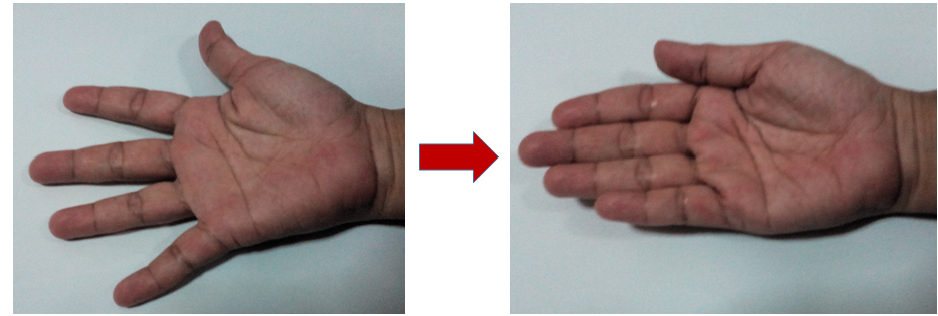 |
| Lay your affected hand flat on a solid surface. Gently separate all the fingers and continue until the fingers feel slightly stretched. Hold the stretch for 20 seconds. Repeat the stretch 10 times. |
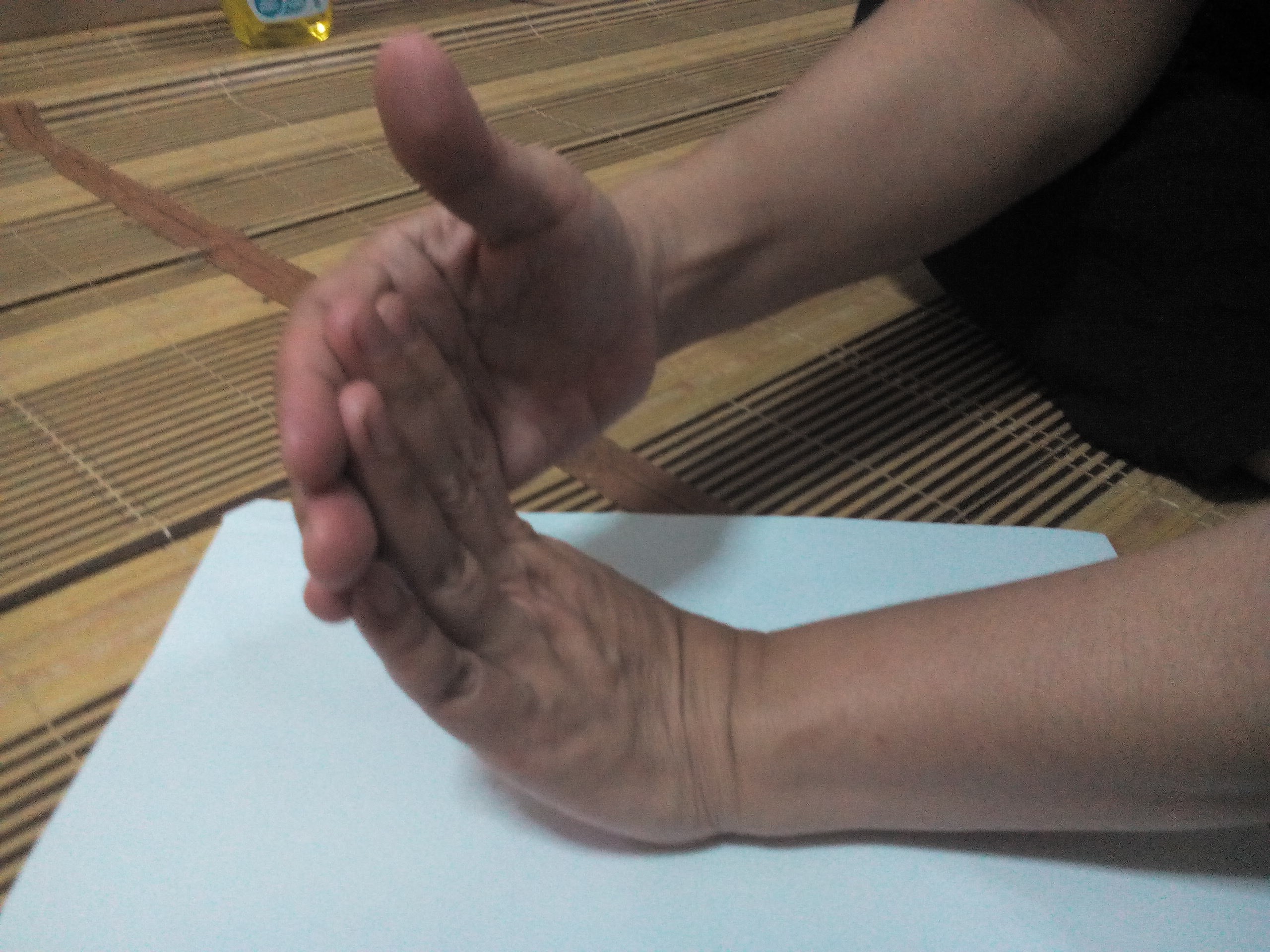 |
Use your other hand to pull your affected finger beyond extension until you feel a stretch at the bottom of the finger. Hold the stretch for five to 20 seconds then stretch your finger in the other direction. Repeat each stretch 10 times.
|
 |
| Pick up a soft item and place it in your palm. Squeeze it tightly for several seconds. Release, open your fingers wide, and then repeat as instructed by your physical therapist. Regular exercise and movement may help lengthen the flexor tendons, relieving symptoms of trigger finger. |
 |
| Place an elastic band around your fingers. Separate your fingers and thumb, making the band fairly tight. Allow it to stay in place on your fingers and thumb. Make a repetitive pumping motion to extend the fingers and thumb away and close to each other again and again. Repeat 10 times. |
How can trigger finger be prevented?
Avoid activities that require repetitive gripping, repeated grasping or the prolonged use of vibrating hand-held machinery, computer and sewing machine.
References
- Bonnici AV, Spencer JD. A survey of ‘trigger finger’ in adults.J Hand Surg [Br] 1988;13:202–3.
- http://www.ipcphysicaltherapy.com/TriggerFinger.aspx
- Trigger finger: etiology, evaluation, and treatment Al Hasan Makkouk Æ Matthew E. Oetgen Æ
- Carrie R. Swigart Æ Seth D. Dodds Curr Rev Musculoskelet Med (2008) 1:92–96
- Verdon ME. Overuse syndromes of the hand and wrist. Prim Care Clin Office Pract 1996;23:305–19
Source image
- Unit Fisioterapi, Hospital Melaka
- www.maurerlaw.net/
| Last Reviewed | : | 23 August 2019 |
| Writer / Translator | : | Ismawi bin Ismail |
| Accreditor | : | Daaljit Singh a/l Harbachan Singh |
| Reviewer | : | Halimah bt. Hashim |


